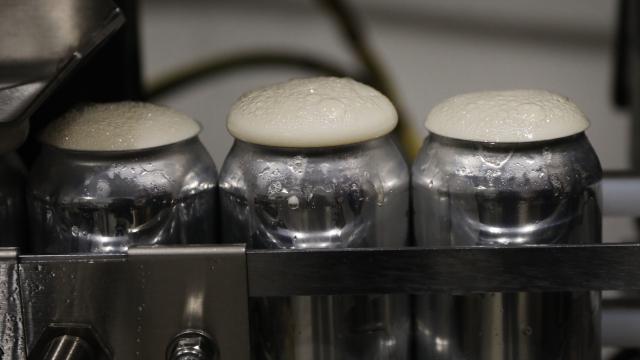Researchers say they’ve stumbled upon a peculiar cause of liver disease: a kind of bacteria that produces alcohol inside our gut.
According to lead author Jing Yuan, a doctor at the Capital Institute of Pediatrics in China, their discovery was completely accidental.
He and his colleagues had been treating a patient with severe fatty liver disease, a condition where too much fat builds up in the organ. A heavy drinking habit is the most common cause of fatty liver, but many people also develop non-alcoholic fatty liver disease (NAFLD). And in this patient’s case, the disease had progressed to the point where their liver was seriously inflamed. This form of NAFLD, called nonalcoholic steatohepatitis (NASH), can cause permanent liver damage and liver cancer.
When Yuan and his team looked deeper, they found that the patient’s blood alcohol level tested unusually high, past the point of typical intoxication and even potentially fatal. But according to the patient, they never regularly drank alcohol. Instead, it seemed like they had a rare condition called auto-brewery syndrome.
Victims with the syndrome produce copious amounts of alcohol through the breakdown, or fermentation, of starchy foods. There have only been a handful of cases ever documented, but an overgrowth of certain yeast in the gut (the same thing that helps create beer and wine) has long been thought to be its sole cause. But again, things got weirder.
“Surprisingly, we found that this effect was due to bacteria rather than fungi, because antifungal treatments had no effects on this syndrome,” Yuan told Gizmodo in an email. “In this case, we isolated and identified some strains of Klebsiella pneumoniae that were strongly associated with endo-alcohol production.”
To test out their theory, Yuan and his team experimented with mice. They delivered samples of the boozy K. pneumoniae (the strains were dubbed HiAlc) directly to the stomachs of mice, who went on to develop their own version of NAFLD.
The same thing happened when they replaced the natural gut bacteria of unaffected mice with gut bacteria from these mice via a faecal microbiota transplant. But it didn’t happen when they got rid of the HiAlc K. pneumoniae before the transplant, further pinning the blame on that specific bacteria.
When they next studied the guts of people living in China with NAFLD, they found that over 60 per cent also seemed to carry these exact strains of K. pneumoniae. Coupled with the mice experiments, Yuan said, the chances are pretty good that these bacteria will turn out to be one “causative agent of NAFLD in humans.”
The team’s findings were published Friday in Cell Metabolism.
Of course, there are many factors that make people vulnerable to NAFLD. These include obesity and type 2 diabetes. But importantly, these are also metabolic conditions that are being increasingly linked to an imbalanced gut microbiome (as has NAFLD in general).
The scope of the problem could be profound. In the U.S. alone, between 30 and 40 per cent of adults in the United States have NAFLD. At this point, Yuan said, there’s no reason to believe that people with NAFLD in the U.S. are less likely to have these bacteria than those in China. In areas like Japan, which has reported a relatively high number of auto-brewery cases, the phenomenon could be even more substantial.
There’s plenty of research to be done in understanding these bacteria and their connection to our liver health. To that end, Yuan and his team are planning a bigger study that will follow adults and children to help understand why some people are more likely to carry these strains than others. And there will need to be more work testing out whether getting rid of these bacteria via antibiotics can help some people with their NAFLD.
Thankfully, the original patient who started Yuan’s research has since recovered from the worst of their auto-brewery syndrome, and the severity of their fatty liver has declined as well. The team credits this recovery to changes in the patient’s diet as well as antibiotic treatment.
